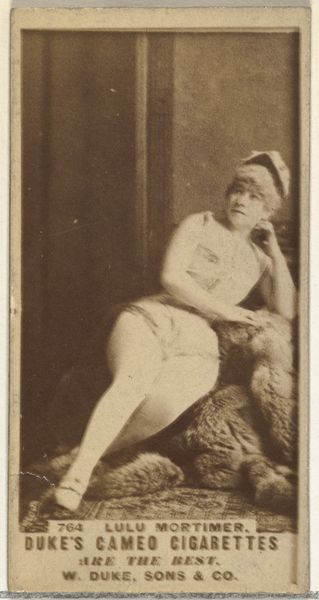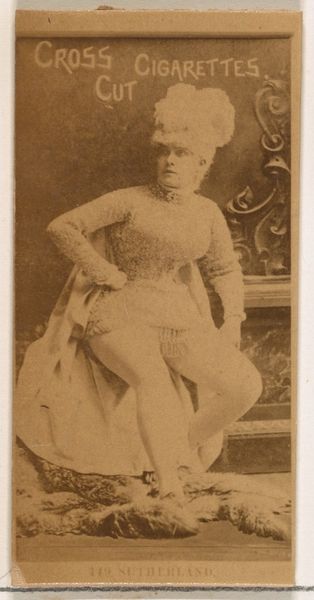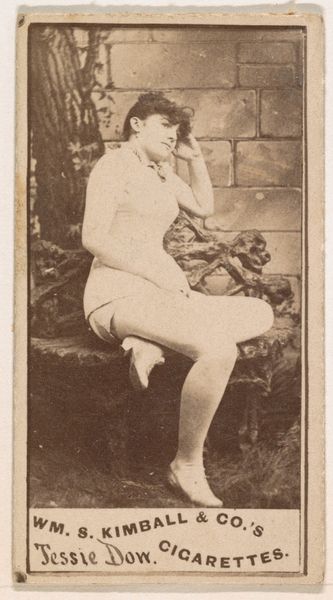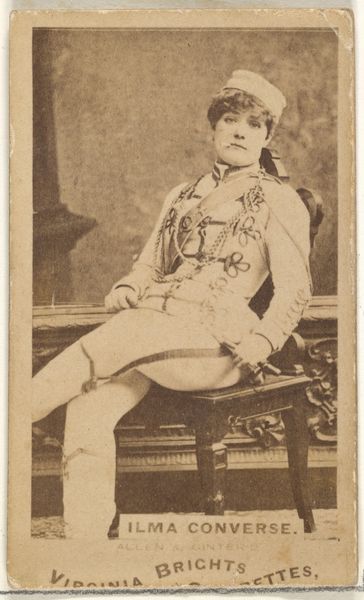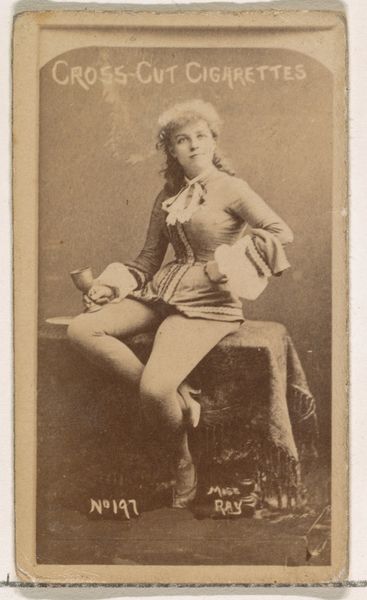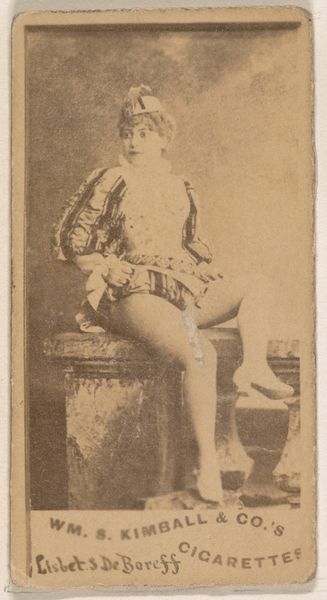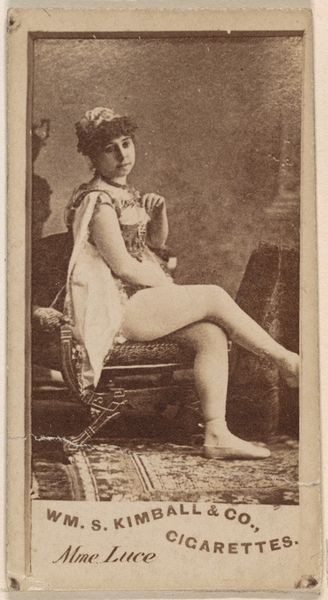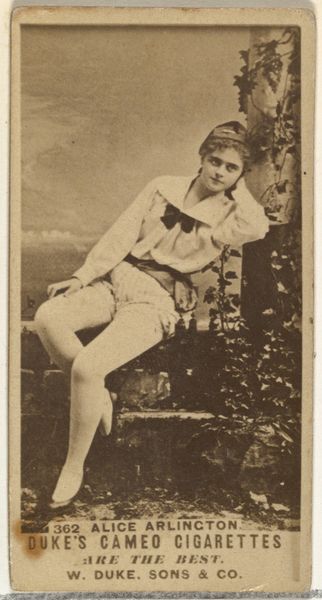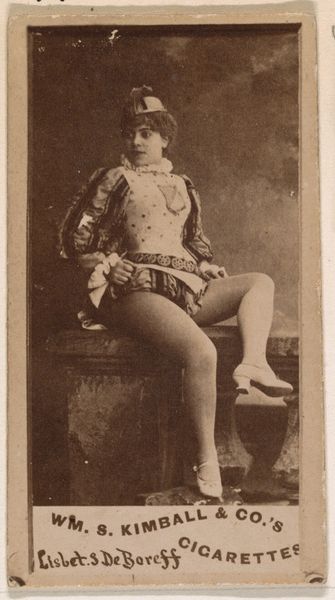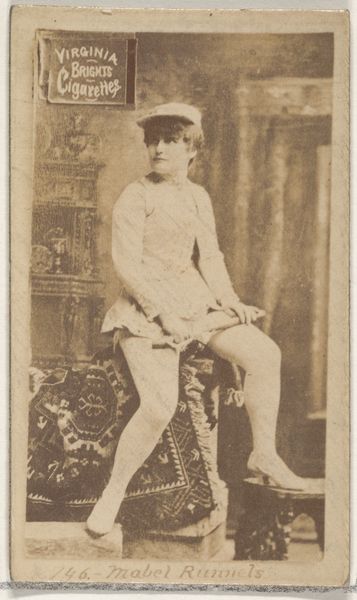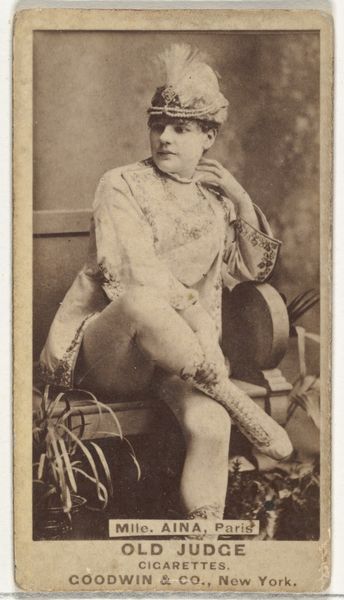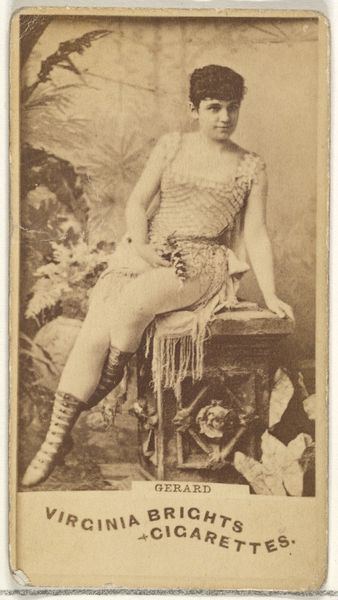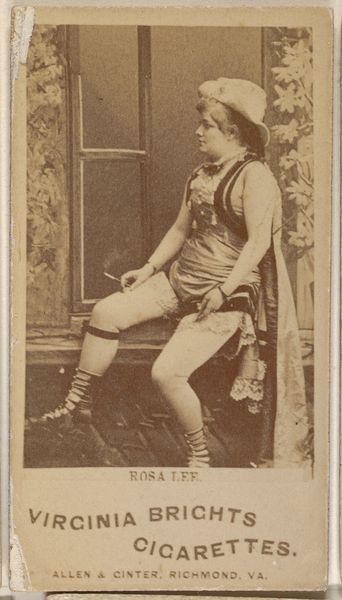
Miss Thorp, from the Actresses series (N203) issued by Wm. S. Kimball & Co. 1889
0:00
0:00
drawing, print, photography
#
portrait
#
drawing
# print
#
photography
#
erotic-art
Dimensions: Sheet: 2 5/8 × 1 3/8 in. (6.6 × 3.5 cm)
Copyright: Public Domain
Editor: This is a fascinating piece from 1889 by Wm. S. Kimball & Co., a photograph titled "Miss Thorp, from the Actresses series." It seems to be a commercial print, likely part of a cigarette card set. What I find particularly striking is the overt display of female sexuality and its direct association with a product targeted at a predominantly male audience. What does it say about the way art was used at the time? Curator: It speaks volumes, doesn’t it? These "Actresses" series cards weren’t simply decorative; they actively participated in the evolving socio-economic landscape of the late 19th century. Think about it: mass-produced images distributed with cigarettes, exploiting the burgeoning star culture. They were cheap to make, easy to distribute, and extremely effective in boosting sales, weren't they? The very creation and circulation of these images tell a powerful story about how the image of women, and in this case a star image of a woman, was being commodified. Editor: So, the "erotic art" tag makes sense? It seems deliberately provocative, and intended as such. Curator: Absolutely. The hint of scandal would have been part of the allure, wouldn't it? It's about subtly pushing boundaries within acceptable commercial contexts, something still pervasive in the commercial consumption of imagery today. Consider the implications of Miss Thorp’s gaze: Is she complicit, challenging, or a victim of objectification? How is her sexuality portrayed and for whose consumption? Editor: That makes me think about the actresses themselves. Were they being properly compensated or were their images being used without permission? What control did they have over how they were presented? Curator: Those are crucial questions. Understanding the power dynamics inherent in image creation and distribution is fundamental. Exploring archives of theatrical history would allow us to know better. Now how does this relate to our culture of today? Editor: It's disturbing to realize these cards were an early form of targeted advertising that sexualized women to sell products. Understanding that history certainly makes you question contemporary uses of similar images today. I'll definitely be viewing advertisements critically from now on.
Comments
No comments
Be the first to comment and join the conversation on the ultimate creative platform.
